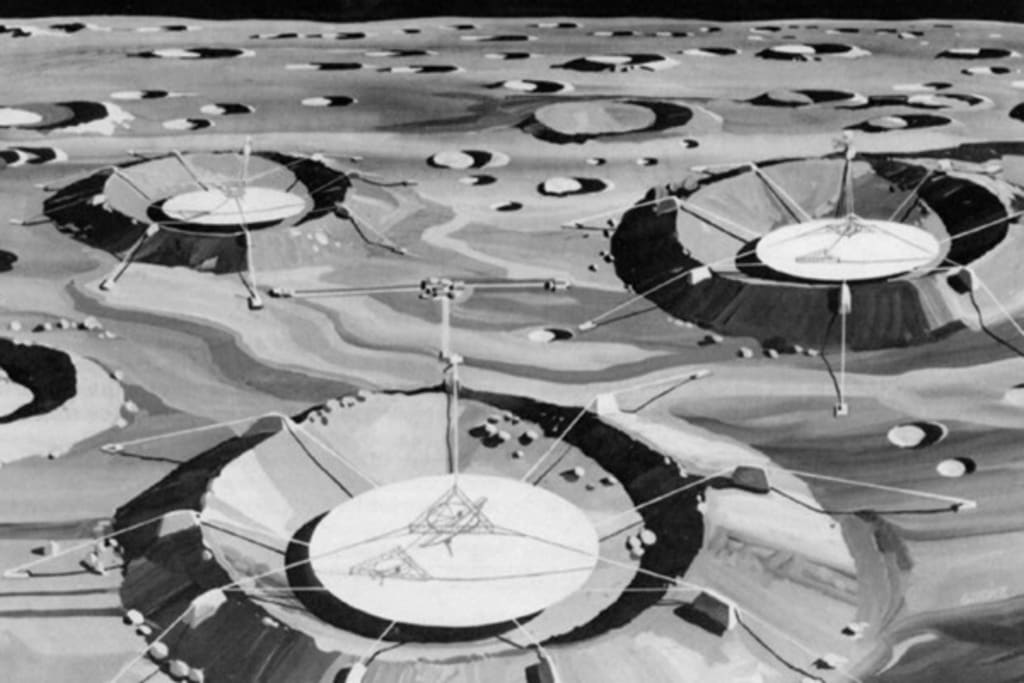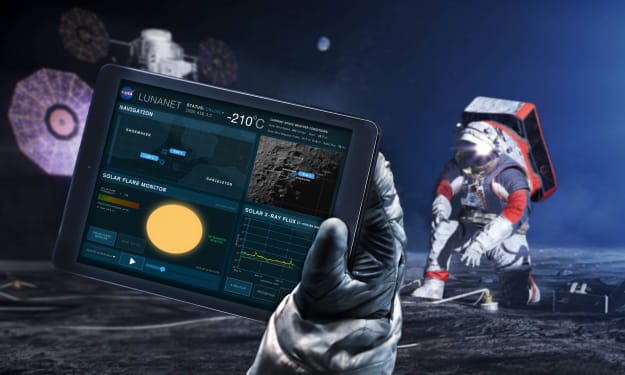Moon based Telescopes and observatories
Expanding our Cosmic Perspective.

The moon, with its unique environment and strategic location in space, offers a promising platform for the construction of telescopes and observatories that can revolutionize our understanding of the universe. In this article, we will explore the advantages of having telescopes and observatories on the moon's surface, the potential for constructing large-scale instruments with clearer views and reduced interference, and the significant contributions they can make to astronomical discoveries.
One of the primary advantages of moon-based telescopes is the absence of Earth's atmospheric distortion. Earth's atmosphere can significantly hinder the clarity of astronomical observations, causing blurring and distortions in the images captured by telescopes. By placing telescopes on the moon, we can bypass this obstacle and obtain sharper, clearer views of celestial objects. The stable lunar environment, devoid of atmospheric turbulence, allows for unprecedented precision and resolution in capturing distant stars, galaxies, and other cosmic phenomena.
Furthermore, moon-based telescopes can minimize interference from various sources of light pollution present on Earth. Urban areas, artificial lighting, and atmospheric scattering can all contribute to light pollution, which obscures faint astronomical signals. By positioning telescopes on the moon's surface, far away from human settlements and terrestrial light sources, we can significantly reduce such interference. This provides astronomers with an opportunity to observe even the faintest celestial objects and phenomena that would otherwise be challenging to detect from Earth-based observatories.
The moon's unique location also offers strategic advantages for astronomical observations. Placing telescopes on the moon's far side, shielded from radio frequency interference generated by human activities on Earth, can enable sensitive radio astronomy measurements. Radio telescopes on the moon could detect extremely weak radio signals from the early universe, study cosmic microwave background radiation, and investigate phenomena such as pulsars and fast radio bursts with unprecedented precision.
The absence of atmospheric interference and reduced light pollution also allows for the construction of larger and more sensitive telescopes on the moon. Earth's gravity makes it challenging to build and operate extremely large telescopes due to structural limitations and distortions caused by gravitational forces. On the moon, telescopes can be constructed with larger primary mirrors or arrays, enabling higher sensitivity and the ability to capture more detailed images of astronomical objects. These large-scale moon-based telescopes would open up new frontiers in astronomy, enabling us to observe distant galaxies, study exoplanets in greater detail, and probe the earliest moments of the universe with unprecedented clarity.
Moreover, moon-based telescopes have the potential to complement and collaborate with existing Earth-based observatories and future space telescopes. The combination of observations from different vantage points can enhance our understanding of the universe. Data collected by moon-based telescopes can be combined with observations made by telescopes in Earth orbit, such as the Hubble Space Telescope, or upcoming observatories like the James Webb Space Telescope, to provide a more comprehensive and multi-faceted view of the cosmos.
The contributions of moon-based telescopes and observatories to astronomical discoveries would be significant. They would offer unprecedented opportunities to study the early universe, explore the mysteries of dark matter and dark energy, investigate gravitational waves, and search for signs of extraterrestrial life. By providing clearer views, reduced interference, and access to unique observational windows, these lunar observatories would push the boundaries of our knowledge and unlock new insights into the nature and evolution of the universe.
In conclusion, moon-based telescopes and observatories hold great potential for revolutionizing our understanding of the cosmos. With the absence of atmospheric distortion, reduced interference, and the ability to construct large-scale instruments, lunar observatories offer unprecedented clarity and precision in capturing astronomical observations. By harnessing these advantages, we can delve deeper into the mysteries of the universe, advancing our knowledge and expanding our cosmic perspective. The moon beckons us to unlock its secrets and embark on a new era of astronomical exploration.
About the Creator
Enjoyed the story? Support the Creator.
Subscribe for free to receive all their stories in your feed. You could also pledge your support or give them a one-off tip, letting them know you appreciate their work.





Comments
There are no comments for this story
Be the first to respond and start the conversation.